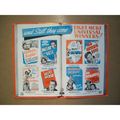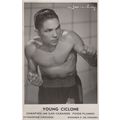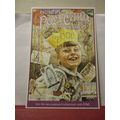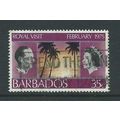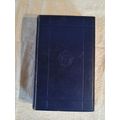Oxford - St. Mary-the-Virgin church RP c.1960
- Condition : Used
- Dispatch : 2 Days
- Brand : None
- ID# : 32437698
- Quantity : 1 item
- Views : 295
- Location : United Kingdom

- Seller : justthebook (+1703)
- Barcode : None
- Start : Thu 14 Oct 2010 00:05:53 (BST)
- Close : Run Until Sold
- Remain : Run Until Sold
More Listings from This Seller view all
Seller's Description
- Postcard
- Picture / Image: St. Mary-the-Virgin, Oxford - real photo postcard
- Publisher: none given
- Postally used: n/a
- Stamp: n/a
- Postmark(s): n/a
- Sent to: n/a
- Notes & Key words:
------------------------------------------------
Postage & Packing:
UK (incl. IOM, CI & BFPO): 99p
Europe: £1.60
Rest of world (inc. USA etc): £2.75
No additional charges for more than one postcard. You can buy as many postcards from me as you like and you will just pay the fee above once. (If buying postcards with other things such as books, please contact or wait for invoice before paying).
Payment Methods:
UK - PayPal, Cheque (from UK bank) or postal order
Outside UK: PayPal or Google Checkout ONLY please. NO non-UK currency checks or money orders (sorry).
NOTE: All postcards are sent in brand new stiffened envelopes which I have bought for the task. These are specially made to protect postcards and you may be able to re-use them. In addition there are other costs to sending so the above charge is not just for the stamp!
----------------------------------------------
Text from the free encyclopedia WIKIPEDIA may appear below to give a little background information:
*************
The University Church of St Mary the Virgin (St Mary's or SMV for short) is the largest of Oxford's parish churches[citation needed] and the centre from which the University of Oxford grew. It is situated on the north side of the High Street, and is surrounded by university and college buildings.
St Mary's has one of the most beautiful spires in England and an eccentric baroque porch, designed by Nicholas Stone, facing High Street.[1] Radcliffe Square lies to the north and to the east is Catte Street. The 13th century tower is open to the public for a fee and provides good views across the heart of the historic university city, especially Radcliffe Square, the Radcliffe Camera, Brasenose College and All Souls College.
A church was established on this site, at the centre of the old walled city, in Anglo Saxon times; records of 1086 note the church as previously belonging to an estate held by Aubrey de Coucy, likely Iffley, and the parish including part of Littlemore.[2]
In the early days of Oxford University, the church was adopted as the first building of the university, congregation met there from at least 1252,[2] and by the early 13th century it was the seat of university government and was used for lectures and the award of degrees. Around 1320 a two storey building was added to the north side of the chancel — the ground floor (now the Vaults cafe) became the "convocation" house used by university parliament,[3] and the upper storey housed books bequeathed by Thomas Cobham, Bishop of Worcester, which formed the first university library.[2]
When Adam de Brome became rector in 1320 the church's fortune became linked to what would later become Oriel College. In 1324 de Brome founded St Mary Hall and appropriated the church's rectory house, including small tithes, oblations, and burial dues for the college, an act confirmed in 1326 by the bishop, Henry Burghersh, after de Brome had King Edward II's patronage to refound the college. De Brome diverted the revenue of the church to his college, which thereafter was responsible for appointing the vicar and providing four chaplains to celebrate the daily services in the church.[4] Early provosts of the college were inducted into their stall in the church, and until 1642 fellows were required to attend services on Sundays and holy days.[2]
St Mary's was the site of the 1555 trial of the Oxford Martyrs, when the bishops Latimer and Ridley, and the Archbishop Cranmer, were tried for heresy. The martyrs were imprisoned at the former Bocardo Prison near St Michael at the Northgate in Cornmarket Street and subsequently burnt at the stake just outside the city walls to the north. A cross set into the road marks that location on what is now Broad Street, the nearby Martyrs' Memorial, at the south end of St Giles', commemorates the events.
A section cut out of 'Cranmer's Pillar' remains from the morning of Cranmer's death on March 21, 1556, when he was brought to the church for a sermon from Dr Henry Cole, Provost of Eton, who on Queen Mary I's instructions, spelled out the reasons why he must die. Cranmer stood on a stage, the corner of which was supported by a small shelf cut from the pillar opposite the pulpit, withdrawing his recantations of his protestant beliefs, he swore that when he was burnt, the hand which had signed them would be the first to burn.[3]
Until the 17th Century, the church was used not only for prayers but also for increasingly rowdy graduation and degree ceremonies. This phenomenon, "The notion that 'sacrifice is made equally to God and Apollo', in the same place where homage was due to God and God alone"[5] was repugnant to William Laud, Archbishop of Canterbury, who in the 1630s initiated the erecting of a separate building for these ceremonies. This project was cut short by the fall of Laud and the outbreak of the English Civil War, but after the Restoration it was revived and carried through by John Fell, Dean of Christ Church, who commissioned Christopher Wren to erect what became the Sheldonian Theatre. Thereafter, the church was reserved for religious worship only.
During his time in Oxford, John Wesley often attended the university sermon,[3] and later, as a fellow of Lincoln College preached sermons in the church, including the university sermon on "Salvation by Faith" on June 11, 1738 and the "Almost Christian" sermon on July 25, 1741. Following his denouncement of the spiritual apathy and sloth of the senior members of the University in his sermon "Scriptural Christianity" on August 24, 1744, he was never asked to preach there again — "I preached, I suppose, the last time at St Mary's," he wrote in his journal, "Be it so; I have fully delivered my soul."[6]
In 1828 John Henry Newman became vicar and his sermons became popular with undergraduates. From the present pulpit John Keble preached the assize sermon of July 14, 1833, which is considered to have started the Oxford Movement, an attempt to revive catholic spirituality in the church and University. The influence of the movement spread and affected the practice and spirituality of the Church of England. By 1843, Newman became disillusioned with Anglicanism and resigned from St Mary's, later joining the Roman Catholic Church.[
Listing Information
| Listing Type | Gallery Listing |
| Listing ID# | 32437698 |
| Start Time | Thu 14 Oct 2010 00:05:53 (BST) |
| Close Time | Run Until Sold |
| Starting Bid | Fixed Price (no bidding) |
| Item Condition | Used |
| Bids | 0 |
| Views | 295 |
| Dispatch Time | 2 Days |
| Quantity | 1 |
| Location | United Kingdom |
| Auto Extend | No |




 for 1 item(s)
for 1 item(s)









